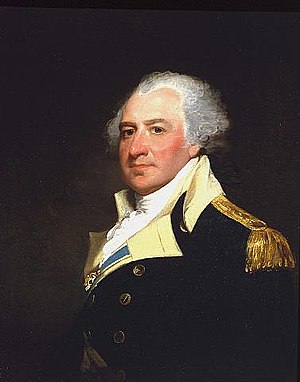Just two days after the birth of the Continental Army, Congress approved the position of Quartermaster General and Assistant Quartermaster General on June 16, 1775.
The major duties of the Quartermaster General in Washington’s Army were in transportation, forage, camps and the movement of troops. Additional duties encompassed distributing rations, clothing, ammunition within the regiments, assigning quarters and even pitching camp.
However, when Congress originated the position of Quartermaster, the number and scope of duties were Herculean to say the least. He would:
- Act as chief of staff for all commanders of the Continental Army.
- Act as prime supplier of materials and all contractual dealings with civilians.
- Operate and repair supply lines when necessary.
- Scout out all roads and terrain traveled upon.
- Establish camps and be responsible for the transfer of all troops and supplies.
The first Quartermaster was the astute Quaker merchant, Major General Thomas Mifflin. With an eye for business and well known among the financial circles of both Philadelphia and New York, he made an ideal first choice. While Colonel Stephan Moylan briefly took over the duties from June to September of 1776, handing them back to Mifflin, it was Mifflin and General Nathaniel Greene who filled this position for most of the Revolutionary War.
During a campaign it was the role of the Quartermaster to draw up the Order Of Battle for the army. The Order of Battle depended on the plan used for the army to camp and form for battle. It was drawn up prior to the campaign and required approval by the Commander-in-Chief Washington. The Quartermaster regulated all marches meeting with Brigadiers and Artillery to discuss assignments and deployments, including quick deployments in case of emergency. He had a total knowledge of the landscape that the army was to march across, as well as the terrain where the battle was to be fought. He furnished all maps and guides.
Unique to the role of Quartermaster in Washington’s Army was that he was expected to take command of the army in the Commander-in-Chief’s absence. In a letter to General Nathaniel Greene on September 3, 1779,Washington expressed that in his opinion, “it was proper for you to command troops under certain circumstances.” During the battle of Monmouth, Greene was placed in command of the right wing of Washington’s army.
Today, the role of Quartermaster General has continued, divided into four separate departments, each with a massive staff to see to the smooth operation of their responsibilities. What is amazing to consider is that the gentlemen who filled the shoes of Quartermaster in Washington’s Army were also expected to fight on a field of battle, manage a vast numbers of troops while thinking ‘how does one pay for all this?’
If you would like to read more on the American Revolution, check out these free previews of great books on Amazon
Shades of Liberty is the exciting new action-packed series that chronicles African Americans who fought in the American Revolutionary War.
Also of interest on Revolutionary War Journal
General George Washington’s Explosive Temper Helped Shape the Man Who Forged a New Nation
Washington’s Staff During the American Revolutionary War: Adjunct General
References
Jackson, Ronald Verne, Officers of the Continental Army. 1988 North Salt Lake Publ., Utah
Ray, Alexander, Officers of theContinental Army, Who Served to the End of the War and Acquired theRight to Commut. Pre-1923 Reprint 2009 BiblioLife, LLC
Risah, Erna, Supplying Washington’s Army. 1981 Center of Military History, U.S.Army Wash., DC.



